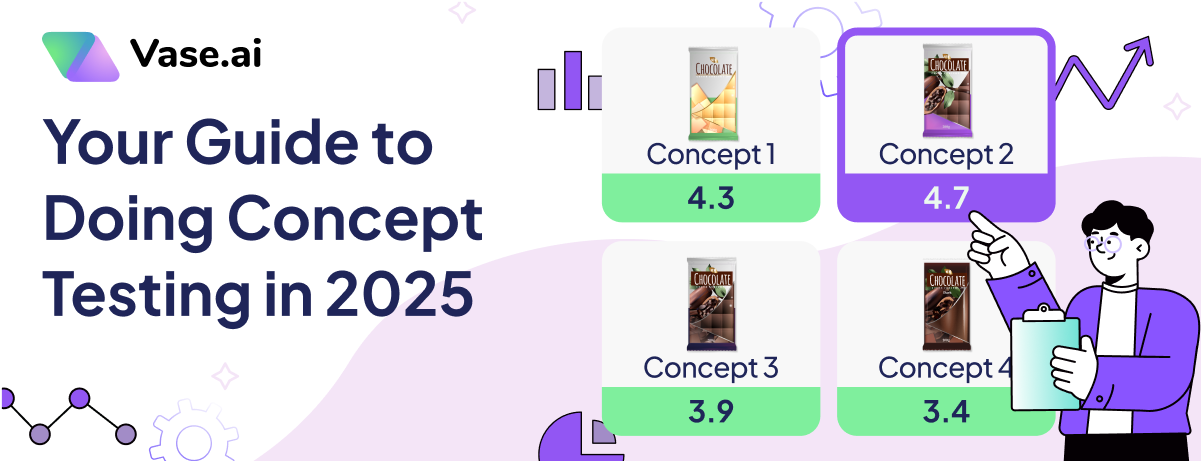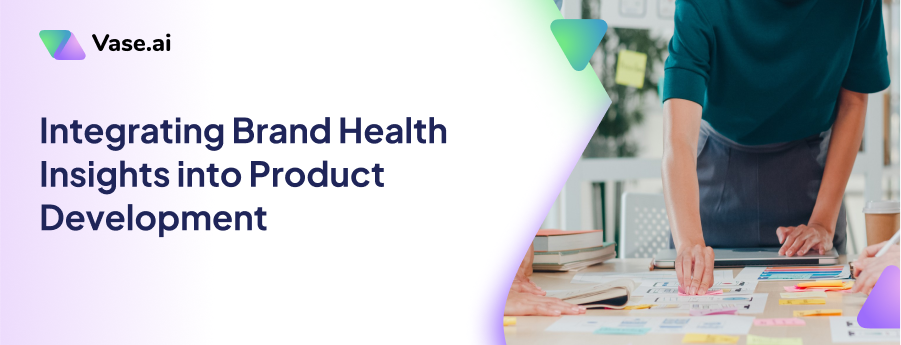So, you’ve been tasked with testing a new product concept, and you’re unsure where to start. Don’t worry; we’ve got your back. Concept testing is like your safety net—it helps you figure out if your idea will fly before you go all in. In this guide, we’ll walk you through each step, from setting goals to acting on your findings. Let’s dive in.
What Is Concept Testing?
Concept testing is gathering feedback on an idea—whether a product, service, or campaign—before finalizing and launching it. It validates assumptions, spots potential weaknesses, and identifies ideas worth pursuing. Doing this early helps businesses avoid costly mistakes and save time. Decisions are based on real consumer preferences rather than guesswork.
Here’s a well-known example of what can go wrong when concept testing is overlooked:
In the 1980s, Coca-Cola launched "New Coke" as a replacement for its classic formula. The company conducted taste tests, and the results suggested that consumers preferred the sweeter flavor of the new formula. However, these tests didn’t account for how customers would feel about losing the original Coke altogether.

When New Coke hit the shelves, it quickly became a public relations disaster. Loyal customers were outraged—not because of the taste, but because they associated the original Coke with nostalgia and tradition. The emotional connection to the original product had been underestimated, and customers voiced their disappointment loudly.
Within just a few months, Coca-Cola was forced to bring back the original recipe as “Coca-Cola Classic.” While the company eventually recovered, the misstep cost millions in production, marketing, and brand reputation. This example illustrates why concept testing is essential.
Testing more than just the product’s surface-level features—such as taste or design—helps businesses uncover the emotional and behavioral reactions of their audience. If Coca-Cola had conducted a comprehensive concept test that included sentiment analysis and broader consumer insights, it could have avoided this costly mistake.
Here’s a step-by-step guide to help you navigate the process of concept testing with confidence:
Step 1: Set Clear Goals
The first thing you need to do is set clear goals.
Start by asking yourself what you want to learn. Maybe it’s finding out if people would pay for your product. Maybe you’re unsure of the packaging designs. Be specific.
For example, if you’re launching a new fitness app, a specific goal would be "I want to determine if at least 60% of users believe the app's features justify a monthly subscription fee." Avoid a vague goal like "I want to know if people like my app”.
In the words of management guru, Peter Drucker, “What gets measured, gets managed”.
Pro Tip: Break your goals into smaller, measurable objectives. If your overall goal is to validate a product idea, you could set mini-goals like testing appeal, evaluating features, and assessing purchase intent.
Step 2: Identify Your Target Audience
Now that you’ve set your goals, it’s time to figure out who you will reach out to for answers.
Define your ideal customers. Are they working professionals? Young parents? College students?
For example, we worked with the skincare brand, Tohtonku, which wanted to understand the needs of young female consumers. But they didn’t stop at age—they looked at race, lifestyle, location, and shopping habits to niche and segment the audience.
They found a difference in the variety of brands and preferences between different races and what motivates them to choose a brand.
You can use the framework we use at Vase.ai, to define your ideal customer profiles. Deep dive into buying habits, preferred shopping channels, and even challenges your audience faces.
Step 3: Use a Concept Testing Platform
Now that you’ve figured out who your audience is, you’re ready to start testing your concept. This is where you get into details and ask the important questions—what do people think of your idea? Do they like the design? Would they buy it?
Here’s a product concept testing framework we use:
Let’s say you’re testing three packaging designs for a new snack. This framework lets you present each design to your audience and ask them what stands out, what they’d change, and which one they’d buy. By the end of the test, you’ll know exactly which design appeals to your audience more.
👉 Create surveys and get answers in as fast as 3 days. Vase.ai makes consumer research quick.
Step 4: Prepare Your Concepts
Now let’s talk about your concepts. It needs to be presented clearly, whether it’s a product, a design, or even a marketing message. You won't get useful feedback if the audience doesn’t understand what you’re showing them.
For instance, if you’re testing a healthcare product, the framework below could be a lifesaver. This framework is tailored to retail models in the healthcare sector, helping you discover important data like customer preferences, potential barriers, and motivators.
Keep things consistent when preparing your concepts. If testing multiple ideas, make sure they’re presented in the same format. For example, if you’re showing product mock-ups, use the same style and quality for all of them. This avoids bias and ensures a fair comparison.
Step 5: Craft Targeted Questions
Here’s where things get interesting—crafting your questions. The questions you ask can make or break your concept test. There are two types of questions you’ll use: quantitative and qualitative.
Quantitative Questions
Quantitative questions give you measurable data, making it easier to spot trends and preferences at a glance. For example, if you’re launching a new fitness app, you could ask: "On a scale of 1 to 10, how easy is it to navigate the app?” or “How likely are you to recommend this app to a friend?”
For a skincare product, you might ask: “From 1 to 5, how effective does this product appear based on its description?” or “How likely are you to switch to this product from your current brand?”
These types of questions are perfect for understanding the overall appeal, usability, or purchase intent.
Qualitative Questions
Qualitative questions, on the other hand, dig deeper. They’re open-ended and encourage respondents to share detailed feedback. If you’re testing a new line of eco-friendly packaging for a beverage company, you might ask: “What do you like or dislike about the packaging design?” or “What improvements would you suggest to make this packaging more appealing?”
In the context of a gaming platform, you could ask: "What specific features would you like to see added to improve the gaming experience?”
These questions are great for uncovering motivations, barriers, and opportunities for improvement.
Using Both Types
Let’s say you’re testing a new cereal brand. You could pair quantitative questions like: “How likely are you to switch from your current cereal to this one?”
With qualitative ones such as: “What do you think about the flavor and the packaging design?”
A combination of qualitative and quantitative questions will draw both—the big picture from measurable data and the finer details from open-ended insights. Balancing these types of questions ensures you’re covering all bases and gathering well-rounded feedback.
Step 6: Collect and Analyze Feedback
Once your surveys are live, it’s time to collect feedback. Look for patterns in the data—are certain demographics responding differently? Is there a clear winner among your concepts?
If you want to evaluate a recent campaign’s success, we have a framework for that too.
Our Post-Campaign Effectiveness Study framework helps you measure that.
Analyzing feedback isn’t just about numbers. Pay attention to what people are saying in open-ended responses. These insights often reveal things you didn’t even think to ask about.
Analyzing open-ended answers, especially if they are in the thousands can be time-consuming. Vase.ai’s automated open-ended coding tool categorizes, dissects, and shows you insights from open-ended questions in seconds.
Step 7: Take Action
Finally, it’s time to act on your findings. If one concept outshines the others, move forward with it. The goal is to identify the concept that resonates most with your audience. If feedback highlights areas for improvement, tweak your concept and retest. For instance, if feedback shows customers find your product too expensive, adjust your pricing and run a test again.
Start Your Concept Testing Journey
While concept testing will incur some cost for your business, the amount you spend on concept testing will be negligible, compared to the amount you stand to gain or lose, launching a successful or failed product.
If you’re ready to take the guesswork out of your product launch, consider doing a concept test today.
👉Book a strategy call with our expert researcher today and get a customized research framework tailored to your business needs.








![How to Conduct Competitive Analysis [With Templates]](https://www.vase.ai/hubfs/How%20to%20Conduct%20Competitive%20Analysis/CompetitiveAnalysis_HeroBanner.png)